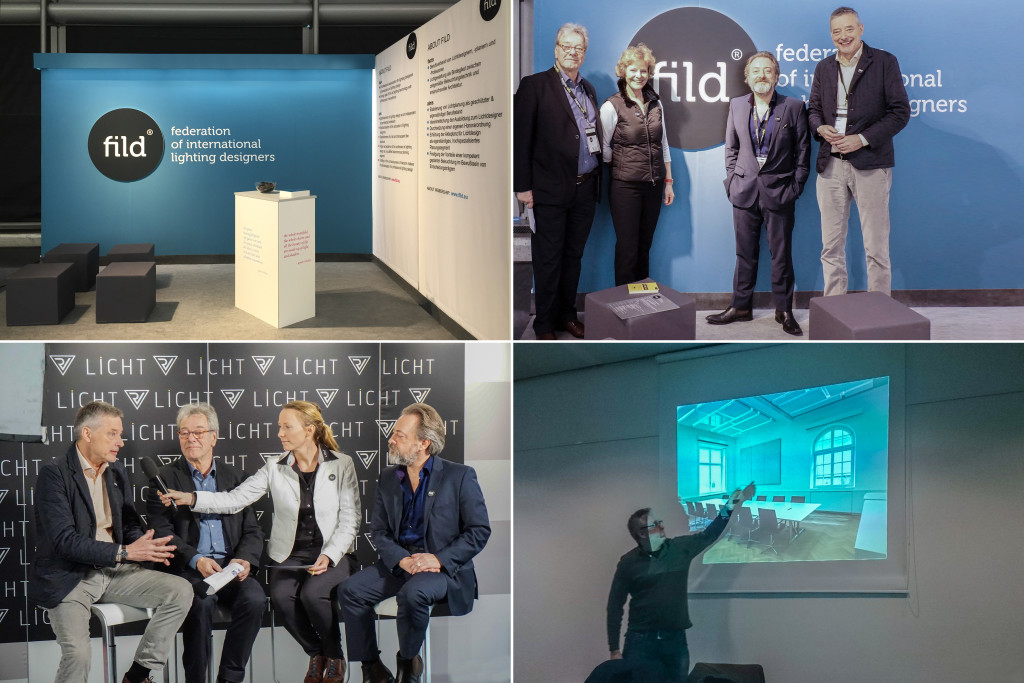The Good, The Bad and The Ugly in Lighting Design and Architecture
Ruairí O’Brien
We sit as lighting designers in our offices and look at beautiful pictures of beautiful lighting scenarios in beautiful glossy magazines. We are inspired by possibilities that new lighting technologies can offer us and allow ourselves to dream of the beautiful projects to come.
Reality hits us as soon as we enter the majority of our public buildings, schools, universities, hospitals, banks, offices, and even, sad but true, in the homes of our friends and families. Cheap and not so cheap, bad, glaring, soupy and creepy lighting everywhere you look. Bad daylight planning and obsolete artificial lighting concepts plague our interiors and at night the lack of light master planning destroys our romantic and playful encounters.
The emphasis on efficiency in the last years has not helped the situation (some have even mistaken this for lighting design). The long tradition of leaving the planning of lighting to technocrats has accelerated the negative effect that bad lighting has had on our buildings, towns and cities. The technocrat often has difficulty in understanding the philosophical and aesthetic dimensions of good lighting. They joke about the “art” of lighting as people often joke about things they are afraid of or do not understand.
Today with the huge array of new technologies available to us lighting is too important to leave to the unimaginative. “The Times They Are A-Changin…” sang Bob Dylan, this could be an inspiration for the lighting industry, politicians and decision makers, a wakeup call for a true human centric lighting. Planning light is, as in all areas of culture, music, science or art, always about bringing the measurable and the immeasurable together. The lighting designer brings the “art” of lighting and technology together; it is only with this holistic and humanistic approach that we can create a truly human centric light. As words and grammar alone cannot produce literature, successful planning of light is not just about energy consumption and light sources but also about the quality of light in terms of the mood and joy it can create. That is the true meaning of human centric light, a light that is healthy to the mind, the body and the soul.
Good lighting can bring something godly to the simplest of buildings; lighting is the true king of spatial design and can transport humble spaces and structures onto another architectural level. Good daylight planning and good artificial lighting is the most cost-effective way to create spaces of quality where people are happy to live, work and play. That is why lighting designers are becoming the most important design profession in the building industry. In times of BIM, modular building, dwindling resources and the Internet Of Things, lighting designers need to step up to the block and play a leading role in the design team. In the future “Heavy-Ugly-Vanity Architecture”, HUVA in short, will be side-lined and a new world of lighting design architecture with its mix and cross over of virtual and real will take its place. Perhaps we will call this the time of light tectonic architecture, a period of light centric design where building facades, interior and public spaces, towns and cities will be designed with the smart usage of light and shadow as its central idea.
In lighting design, efficient is not always effective, successful or even sustainable. Effective is when people use the space lit, enjoy the space lit and come back to the space lit, that is long term sustainability. That is why a market square requires different lighting scenarios, can cost more money and require more energy than a parking lot. After all, you do not have the same lighting in your living room as in your garage.
Text first published in TiL (Trends in Lighting) 2017.
Four years later, the arrival of Corona and the resulting increased awareness for the importance of good office and home office lighting, the greater use of urban public space with adequate shading by day and „Darkness friendly“ lighting by night makes this text more actual than ever. Added to this the increased interest and awareness for environmental friendly urban and architecture concepts require a greater understanding for resource saving lighting design solutions and philosophies.
The „Times Continue to Change“…
CEO – RUAIRÍ O’BRIEN ARCHITEKTUR + LICHT + RAUMKUNST Dresden, Deutschland







